
Rediscovering Japan
(英語で日本を紹介するサイト)
(Introducing Japan in English)

by tomizuta
How it started.
When I was given the assignment to work for a UK company in 1993, one homework
for me was to expand my knowledge on Japan, so that I could respond to
the questions on Japan from my British colleagues.I knew my friends would
like to talk about wine. I thought I needed to be able to talk about Japanese
Sake to join the conversation. A couple of years back, my wife had advised me that I was a business person
only, and was very poor when it came to talking about something other than
business. One suggestion she gave me was to visit the local Sake makers, whenever we were travelling the
countryside. I immediately agreed to follow her advice, because I thought it would give
me a good excuse to discover some local Sake that I’d never tried before,
and enjoy it at home.
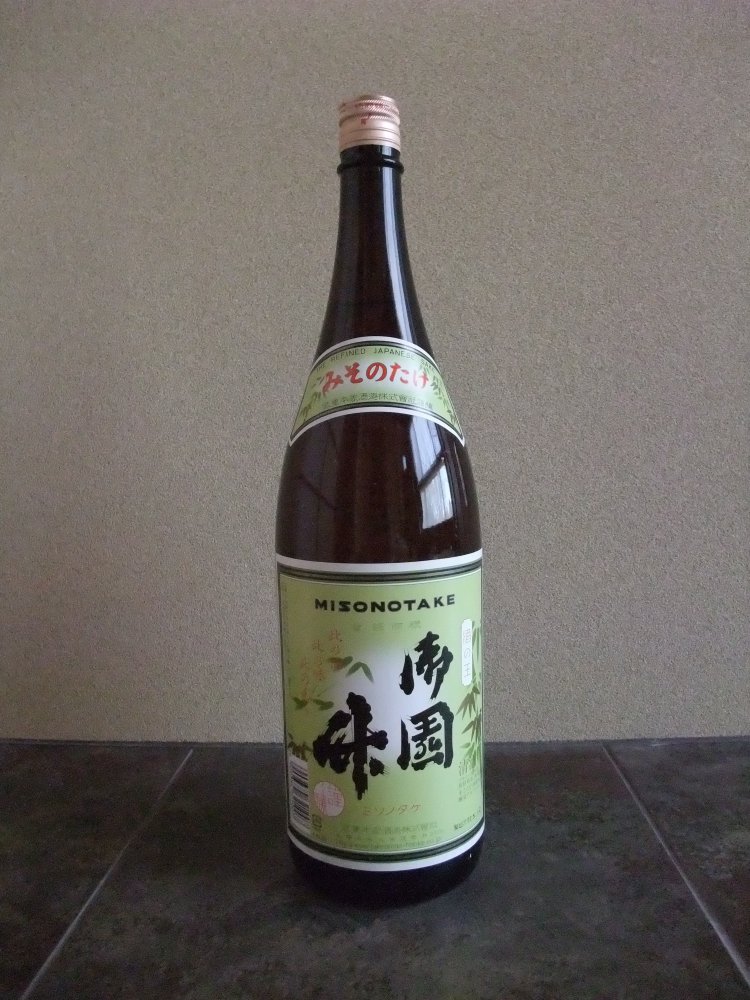
Misonotake (Nagano), the start of my interest in Sake. More on Misonotake
in article on Unno-juku (Nagano).
I also am very keen on collecting. My 60+
years’ hobby is collecting American comics.What you need to understand about collectors, is that they maintain a burning
desire to complete a collection. If I had one missing issue, number 37
or whatever, I wouldn’t be satisfied until I fill that hole. Japanese Sake is very local, and used to be and still is offered to the
gods. If you visit a larger size Shinto shrine, you will notice barrels of local
Sake displayed at the shrine. In the old days, Mikos (unmarried ladies serving the gods at the shrines)
would chew rice and then spit it out to ferment and create the Sake.
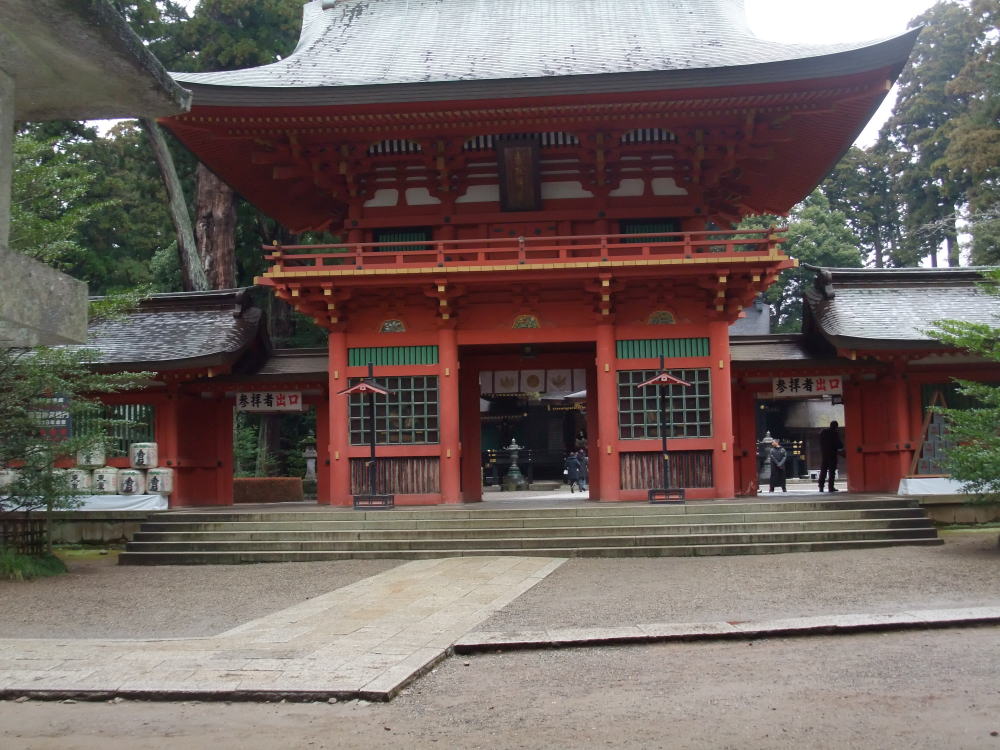
Main gate of Katori Jinguu (Chiba) Note the Sake barrels on the left
I bought myself a catalogue of all the Sake makers, which I recall were
around 3,000 then, and set myself a task to taste all of them eventually. It’s such a formidable task that I know I will never be able to achieve
in my lifetime, but discovering Sake that I have never tried before continues
to be a must for me, when I visit the countryside.
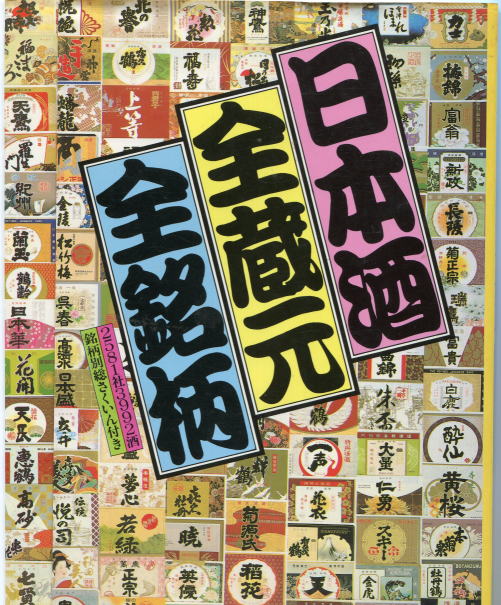
Almanac of Sake, all breweries, all brands, published by Shufu to Seikatsu Company, 1982. Next to the title in small letters, 2,581 breweries, 3,992 brands
The sad part is that when I visit a liquor shop and ask for some local
Sake, there are increasing occasions that the shopkeeper tells me, “we
used to have a local Sake maker just around the corner, but they’ve gone
out of business.” In the 1960s, there were more than 4,000 Sake makers scattered around Japan
that would serve the local shrines and the community, and in the early
Meiji era there must have been much more. There are much fewer Sake makers now; I would
expect less than 2,000.
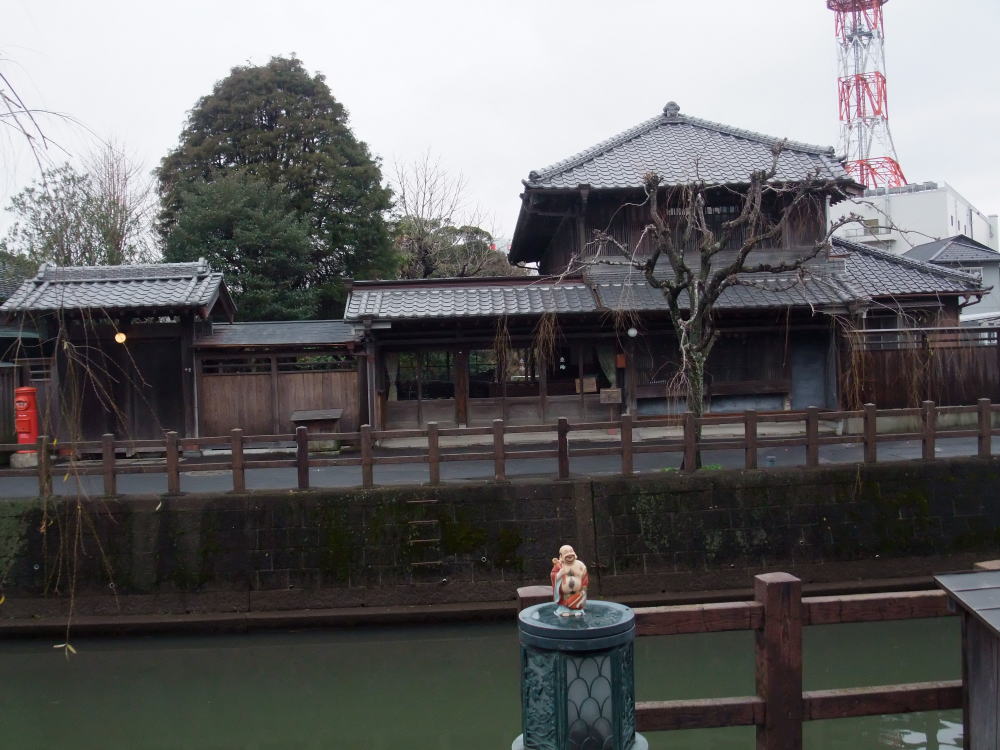
A discontinued Sake brewery on the other side of the river in Katori (Chiba)
The number has fallen, as there are large
Sake makers that sell nationally and have the financial strength to advertise. Also, compared to beer, whiskey and wine, a lot of people felt Sake was
out of fashion, which led to the decline in consumption over the years. The good news is that, peoples’ minds have changed recently, and more people
including ladies now see Sake more positively, as the quality of Sake has
improved considerably in the past two or three decades. Going back to my preparation to be more educated on Japanese culture when
I received my assignment to work in the UK, I went through numerous books
to expand my knowledge on Sake. In due course I will add more information
on the different types of Sake and how to enjoy it.
Likewise, I thought another question that
could come up in conversation, would be religion in Japan. Many people outside of Japan often think that Japan is a Buddhist country.
I think that is because when asked, a Japanese person would think about
it and respond Buddhism, as Buddhism is one of the three largest religions,
and is an easier way to respond. The reality is more complex and a better description is that Japan is multi-religion. Shinto (way of the gods) is the most ancient format, and a blend of animism,
with worship of the deities that created Japan. Buddhism was introduced to Japan in the 6th century from China, and spread rapidly into Japan. It initially was a religion for the aristocrats, but spread rapidly to
the common people after the Kamakura era(12th
to 14th century), as some newer Buddhist denominations, preached that, one can
go to heaven, as long as one utters the word “Namu-Amidabutsu” meaning
that I believe in the Amidabutsu.
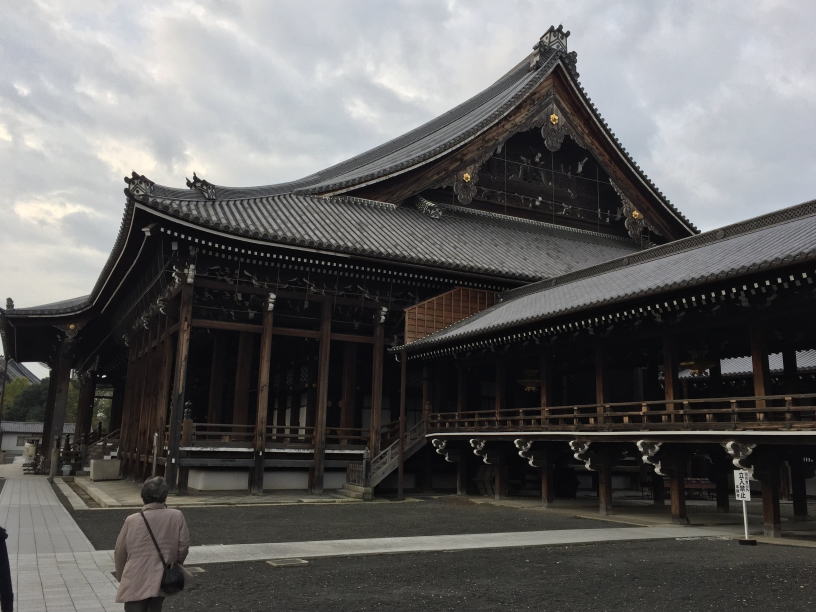
Nishi Honganji, the head buddhist temple of Jodo Shin Sect (Kyoto)
Buddha through meditation reached a state free of all human sins, and achieved
total awareness of the universe (SATORI). As this is not achievable for ordinary folk, Buddha preached that Amidabutsu
would act as a guide to enable common folk to reach the state of Buddha
and join him in heaven. Zen, which was also introduced to Japan in the same period, suggests a
more difficult approach to attain SATORI, through stoicism and meditation,
and became popular among the Samurai, that emerged in the 11th century and had then come to power.
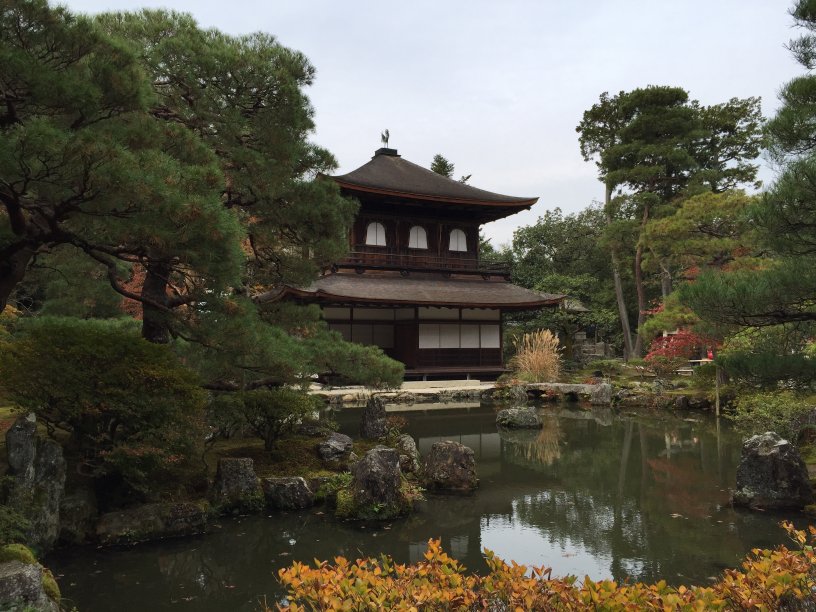
Ginkakuji, a classic temple displaying stoic Zen belief (Kyoto)
Christianity was introduced to Japan in the
16th century by European missionaries. Christianity spread into Western Japan
and many feudal lords converted to Christianity. The Tokugawa family that succeeded in becoming the top feudal lord assigned
by the emperor to govern Japan on his behalf, found Christianity particularly
dangerous for his position, as Christians would not accept 100% loyalty
to the Shogun before god.They also thought to use Buddhism as a means to rule the people by ordering
everybody to belong to a Buddhist congregation.
Christianity was banned in Japan from the early 17th century until the fall of the Tokugawa Shogun. After the fall of the Tokugawa Shogun and restoration of the rule by the
emperor in 1868(Meiji restoration), Shinto became the national religion
of Japan, as Shinto worshipped the gods that created Japan and the emperor
was a descendant. In the Meiji era(1868-1912) many Buddhist temples were assaulted. Buddhism in Japan was lenient to other
religions and lived well with Shinto shrines. It was not problematic for the Japanese to pay respect to the Buddhist
temples as well as the Shinto shrines. In any event I needed to learn more about Buddhism.
Over the years, I had the opportunity to accompany overseas visitors to
the countryside including Onsen(hot spa) areas. Now that close to 20 million
travelers a year are visiting Japan, I thought it interesting to start
a homepage, to spread what I have learned about the Japanese culture as
well as share my experience gathered in my travels to various locations
in Japan, in the hope that it will be helpful to our visitors.
back to top page








